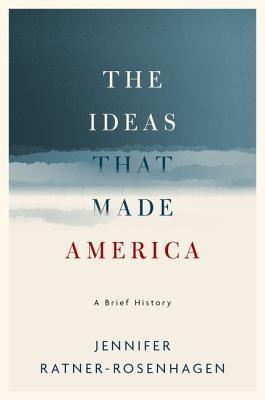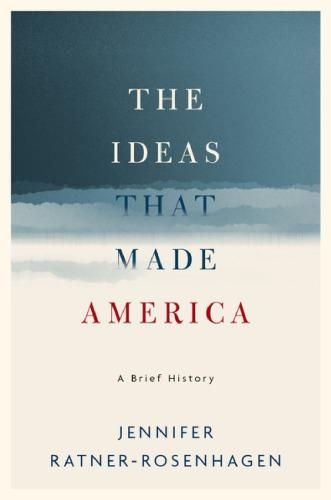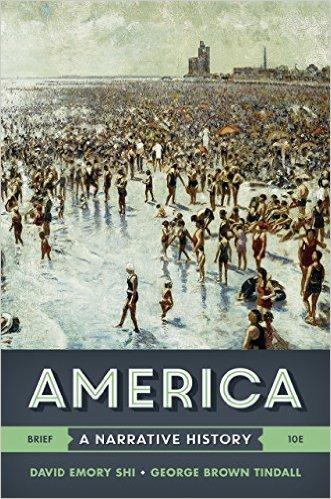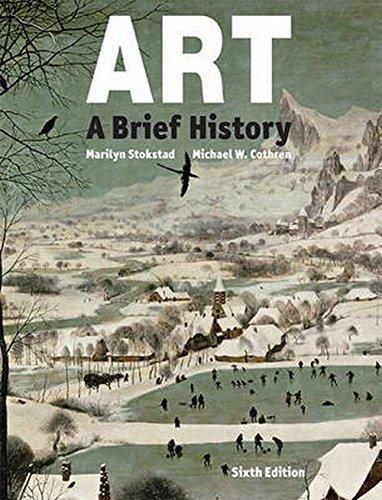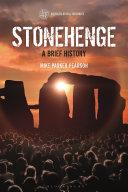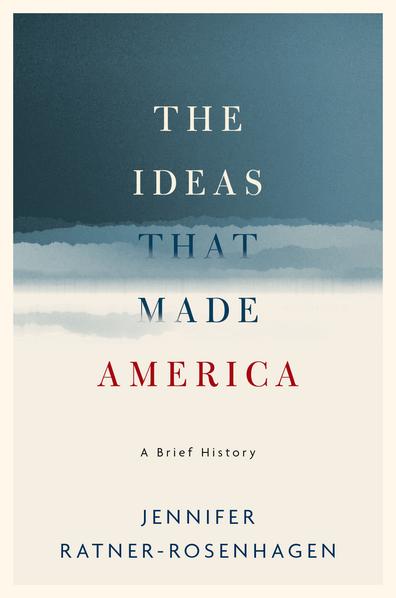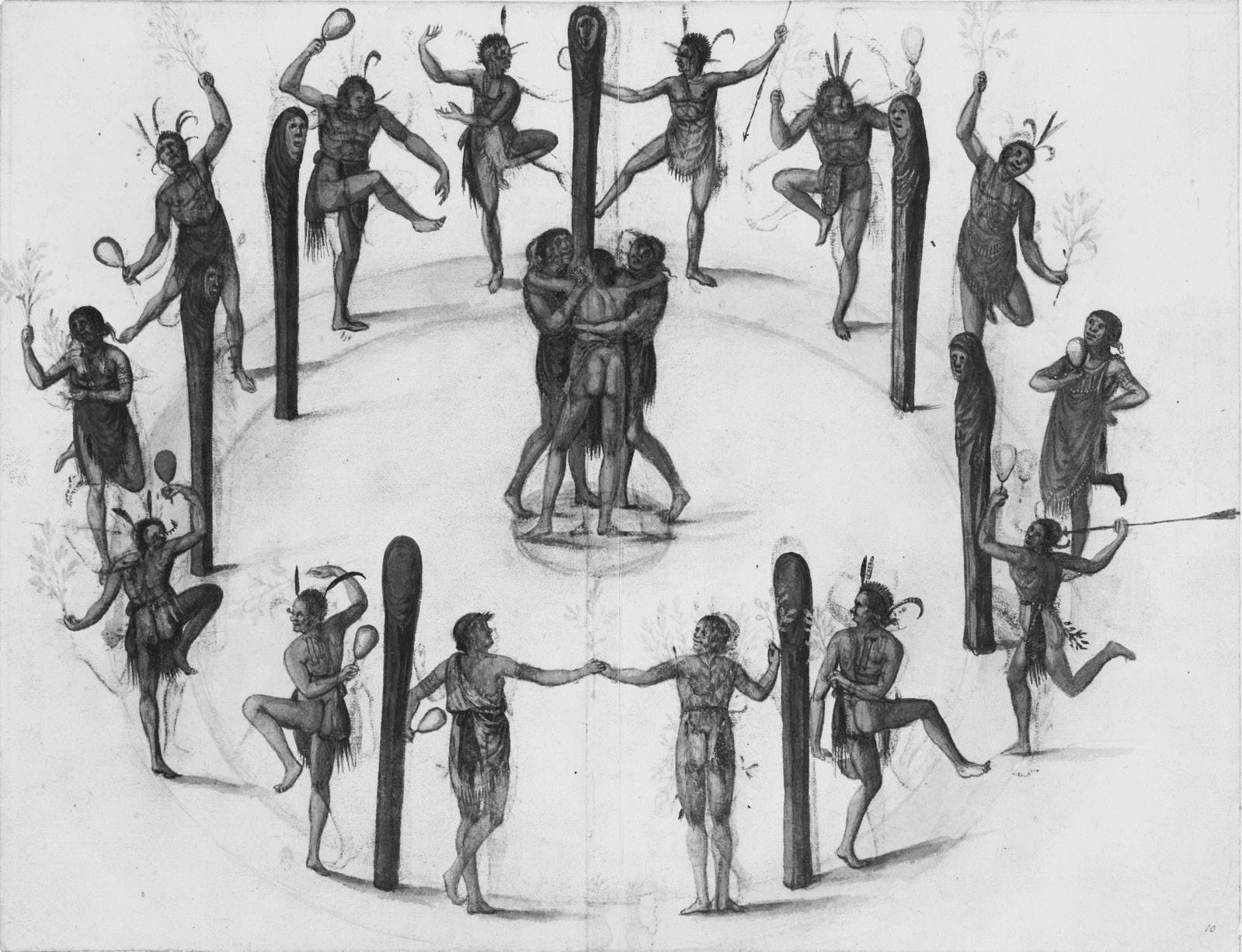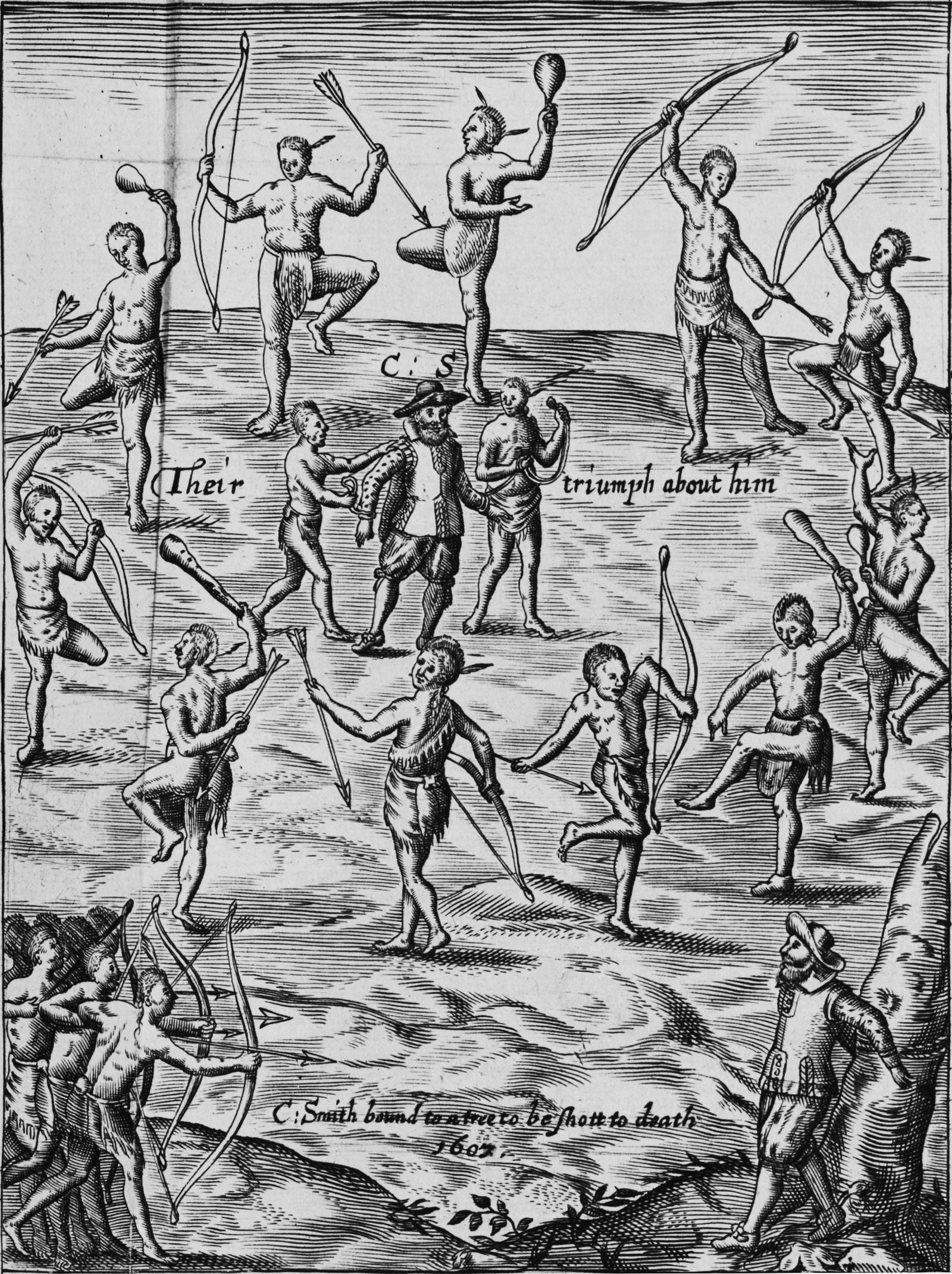1
Oxford University Press is a department of the University of Oxford. It furthers the University’s objective of excellence in research, scholarship, and education by publishing worldwide. Oxford is a registered trademark of Oxford University Press in the UK and certain other countries.
Published in the United States of America by Oxford University Press 198 Madison Avenue, New York, NY 10016, United States of America.
© Oxford University Press 2019
All rights reserved. No part of this publication may be reproduced, stored in a retrieval system, or transmitted, in any form or by any means, without the prior permission in writing of Oxford University Press, or as expressly permitted by law, by license, or under terms agreed with the appropriate reproduction rights organization. Inquiries concerning reproduction outside the scope of the above should be sent to the Rights Department, Oxford University Press, at the address above.
You must not circulate this work in any other form and you must impose this same condition on any acquirer.
Library of Congress Cataloging-in-Publication Data
Names: Ratner-Rosenhagen, Jennifer, author.
Title: The ideas that made America : a brief history / Jennifer Ratner-Rosenhagen. Description: New York, NY : Oxford University Press, [2019] | Includes bibliographical references and index. Identifiers: LCCN 2018027744 (print) | LCCN 2018048434 (ebook) | ISBN 9780190625375 (updf) | ISBN 9780190625382 (epub) | ISBN 9780190625368 (hardback : alk. paper)
Subjects: LCSH: United States—Intellectual life. | United States—History. Classification: LCC E169.1 (ebook) | LCC E169.1 .R35 2019 (print) | DDC 973—dc23 LC record available at https://lccn.loc.gov/2018027744
1 3 5 7 9 8 6 4 2
Printed by Sheridan Books, Inc., United States of America
In memory of Merle Curti and Paul Boyer
CONTENTS
Acknowledgments | ix
Introduction | 1
1. World of Empires: Precontact–1740 | 7
2. America and the Transatlantic Enlightenment: 1741–1800 | 30
3. From Republican to Romantic: 1800–1850 | 51
4. Contests of Intellectual Authority: 1850–90 | 75
5. Modernist Revolts: 1890–1920 | 97
6. Roots and Rootlessness: 1920–45 | 116
7. The Opening of the American Mind: 1945–70 | 133
8. Against Universalism: 1962–90s | 152
Epilogue: Rethinking America in an Age of Globalization; or, The Conversation Continues | 173
NOTES | 181
FURTHER READING | 195
INDEX | 205
ACKNOWLEDGMENTS
Even brief histories require extensive assistance to bring them into being. Support for this book came in many forms, from feedback at the early stages of its conceptualization to help with research tasks as well as comments and suggestions on various drafts of the manuscript. I am so grateful for the contributions of Laird Boswell, Zoë Rose Buonaiuto, Charlie Capper, Charles Cohen, Vaneesa Cook, George Cotkin, Bill Cronon, Richard Wightman Fox, Sam Gee, David Hollinger, Daniel Hummel, Sari Judge, Michael Kazin, Jim Kloppenberg, Bruce Kuklick, Susan Laufenberg, Isaac Lee, Leonora Neville, Kamila Orlova, Dean Robbins, Daniel Rodgers, Ulrich Rosenhagen, Dorothy Ross, Jennifer Stitt, Madelyn Sundquist, Kevin Walters, Robert Westbrook, and Caroline Winterer. I want to thank the generous and resourceful archivists and librarians who helped me turn research trails from cold to hot and dead ends into breakthroughs: Rebecca Jewett, Tony Lattis, Anita Mechler, Robin Rider, and Lisa Wettelson. I am especially indebted to Nancy Toff, who invited me to take on this project and offered me invaluable advice and encouragement along the way, and to Elizabeth Vaziri and Julia Turner for their roles in shepherding the manuscript through production. The generous support from the University of Wisconsin–Madison’s William F. Vilas Trust and the H. I. Romnes
Faculty Fellowship Award provided me the time and resources necessary to complete the book.
To my loving family, Ulrich, Amelie, and Jonah, I say “thank you” again and again for tolerating a home choked with books and notepads, cold sandwiches for dinner, and a matriarch whose imagination too often drifted to remote places and people in American history while she was supposed to be watching them play little league (Jonah), relishing their theater performance (Amelie), or simply listening to them talk about their workday (Ulrich). I am so grateful that my mother, Miriam Ratner, was an English major back in the day when grammar was taught to students and that she was so willing to generously share her expertise as she read through all of her daughter’s drafts. I thank my wonderful students at the University of Wisconsin–Madison who taught me whatever I know about communicating my passion for this material. And these acknowledgments would be sorely incomplete were I not to express my deepest gratitude to the extraordinary scholars in American intellectual history, whose imaginative, innovative, and meticulous research has informed my narrative here and whose books are listed in the further reading section. I would feel that this book did its job if it were read as an invitation to further explorations in these and other engaging works of American intellectual history.
This book is dedicated to the extraordinary historians Merle Curti and Paul Boyer, two of my intellectual history predecessors at the University of Wisconsin–Madison. I never met Merle Curti, but I am so fortunate to occupy the chair named for him and thus to have him as a source of daily inspiration in my writing and my teaching. For readers interested in a longer account of American intellectual history, I recommend starting with his majestic, Pulitzer Prize–winning Growth of American Thought (1944). I did, however, have the good fortune of meeting Paul Boyer, who welcomed me when I arrived at Madison in 2006 and graced me with his brilliant mind, deep humanity, and beautiful friendship. This book is dedicated to their memory.
THE IDEAS THAT MADE AMERICA
Introduction
The Ideas That Made America is a brief survey of some of the most compelling episodes and abiding preoccupations in American intellectual history. While I would like to imagine that a book on the history of American thought can be as straightforward as it is accessible, I have been teaching this material long enough to know that this is not always the case. With equal parts intrigue and skepticism, students often ask me: what is American intellectual history?
The official version of American intellectual history goes something like this: it is an approach to understanding the American past by way of ideas and the people who made or were moved by them. Intellectual history seeks to understand where certain persistent concerns in American thought have come from and why some ideas, which were important in the past, have faded from view. It can focus on the very particular: a single concept (say, “freedom” or “justice”) or a larger body of thought (“democratic theory” or “antislavery”). Histories of thought can also study a particular field of knowledge, such as philosophy, psychology, or sociology, and examine how those disciplines have changed over time. All of these angles into Americans’ ways of thinking are used with a careful attention to time and place: Why did they come to those conclusions? Why then? Why there? For an intellectual historian, the context of the idea is as important as the idea itself. Intellectual history also concerns itself with the myriad institutions that are sites of intellectual production (universities, publishing houses, and think tanks), as well as the
various practices people have employed to engage ideas (reading, writing, discussing, experimenting, and so on).
Though ideas, intellectuals, and intellectual movements are the focus in the history of American thought, it is still first and foremost a historical pursuit that adopts all the habits of mind familiar to political, economic, and environmental historians. Intellectual history may even focus on politics, economics, and the environment. But instead of using political parties, an economic depression, or weather patterns to understand American history at a particular time and place, it would approach political history by examining the ideas in a political treatise or presidential address. Its approach to economic history might be to investigate how economists interpreted the cause of a financial downturn or how unemployed laborers made sense of their difficult circumstances. And its approach to the history of the environment might consider the arguments environmental activists used to try to protect endangered species or the way a poet drew symbols from nature in her or his work.
So that is something like the official version of American intellectual history, and, I think, an accurate description of the enterprise. But had it been described to me this way before I knew anything of the subject, I am not quite sure I would have chosen it as my life’s work.
The reason I became interested in American intellectual history, why it still holds my attention, why I love teaching it, and why my students seem to share the thrill of it is that it is a way to eavesdrop on the past. Its intent is not to spy on the inner thoughts of unsuspecting dead people. Rather, it is fueled by the desire to come into contact with interesting people we might not otherwise know but for the records of their minds they left behind. This historical sensibility gladly welcomes any source to use for eavesdropping: legal documents, novels, private letters, diaries, photographs, or a painting. No source need be too imposing—like a major tome of theological disputation. And no source is too insignificant—like marginalia in a text or an advertisement in a magazine. Though this
book tends to rely on more traditional sources of intellectual history (works of philosophy, political and social theory, literature, and cultural criticism), it hopes to show that these are only some of the sources that can awaken us to all the ways Americans have constructed their realities and made meaning in their lives.
In trying to access the mental and moral worlds of people from the past, The Ideas That Made America asks questions about the possibilities for and limits on doing so. It raises questions such as the following: Is it possible to fully understand the intellectual motivations of historical actors? Can we apprehend how or why ideas have had the power to make Americans change their minds about—or take action on—a particular issue? How can we measure the influence of historical actors’ ideas on social, political, and economic conditions (and vice versa)? By posing such questions, this book invites thinking about thinking. But more important, it seeks to demonstrate that thinking is where so much of the historical action is.
This story opens with the first contacts between European explorers and Native Americans in the late fifteenth century and carries the narrative up to American intellectual life today. Professional thinkers, sophisticated arguments, and intellectual classics are present here, but so are lay Christians, simplistic arguments, and ephemera. They are all here because they reflect the richly varied sources and expressions of Americans’ intellects. These chapters attempt to portray some of the excitement of accessing American history through ideas and to interpret how Americans throughout history have understood themselves, their nation, and their world.
This book tells the story of developments in American intellectual life as a history of “crossings” in all of their varieties—between one cultural setting and another, text and context, secular analysis and sacred belief, and formal argument and emotional affirmation. Of all the types of intellectual transfer this book will focus on, three stand out as the most important.
The movement of ideas across national borders. American intellectual history is filled with expatriates, émigrés, and foreign texts, and so of prime importance here is how Americans’ intellectual and moral worlds have long been the products of transnational crossings. Therefore, some of this history takes place “off stage”: in early modern Europe at the time of Europeans’ first contacts with the indigenous peoples of the New World or on the Galápagos Islands in the nineteenth century when a young Charles Darwin first noticed something strange about the finches on the archipelago. Also crucial are intellectuals who moved off and on the American stage. Just one example is D. T. (Daisetsu Teitaro) Suzuki, who lived and worked with the philosopher Paul Carus in Illinois in the early twentieth century, learning everything he could about American religion and culture, before returning to the United States at mid century as the ambassador of Zen Buddhism to the West.
The movement of ideas across temporal borders. Ideas are products of their time and place, but they also go on to influence future intellectual movements. For example, late twentiethcentury postcolonialist thought drew on turn-of-the-last-century Pan-African discourses, while second-wave feminists took their inspiration from their nineteenth-century American foremothers, who themselves got their inspiration from classical antiquity. In addition, major texts have afterlives. John Eliot, for example, remade the Bible—a text composed well over a millennium earlier—for seventeenth-century Algonquian Indians, and Elizabeth Cady Stanton took the Declaration of Independence of 1776 and turned it into the Declaration of Sentiments in 1848. Kahlil Gibran’s The Prophet reveals both the concerns of an American immigrant in 1923 and those of American soldiers fighting abroad during World War II (who read the Armed Services Edition of his book).
The movement of ideas across borders within American culture. Ideas, patterns of thought, and rigorous modes of inquiry are not the provenance of “highbrow” thinkers only. They can be found in “popular” culture as well. True, some professional
intellectuals worried about tiny logical distinctions and articulated the results of their inquiry in a highly technical language. But they also had their critics who complained that intellectual engagement demanded a widening of intellectual horizons and a more compelling way of communicating their findings to a broader public. A full appreciation of American intellectual life requires attention to debates among elites, as well as concerns expressed in what the great twentieth-century writer Ralph Ellison called our culture’s “lower frequencies.”1
This may seem like an awful lot of moving around, but that is what is required to capture a faithful picture of the ideas that made America. Intellectual history is invariably a history of other times and other places, because historical actors do not just think in their moment and in their tiny spot on planet Earth. They also live in an ideational realm where they are communing with thinkers or moral worlds from elsewhere. Take Martin Luther King Jr., for example. It is important to know that he was inspired by Mahatma Gandhi, and that Gandhi was a fervent reader of Henry David Thoreau, and that Thoreau took a deep interest in fourteenth-century Buddhist texts. So to understand King’s theology, do we need to familiarize ourselves with ancient Buddhism? Not necessarily, although it would not hurt. The point here is simply that in order to capture the imaginations of thinkers from the past, we need to be as intellectually peripatetic as they were.
Ideas are never frozen in their time and place, nor are they vapors that float in some otherworldly, transcendent realm. Rather, they are historical forces that move— and thereby change— from one interlocutor to another, one place to another, and even one time period to another. To be sure, throughout our history, many Americans have exalted ideas like democracy, freedom, and equality, while others experienced them as fighting words meant to deny them their benefits. But these ideas have achieved their power not because their meanings are absolute but precisely because they are so fluid, so multivalent, and so prone to
redefinition when they come into new conditions of possibility. The vibrancy of American thought lies in the movement of ideas as they have been enlisted to mean different things to different people throughout the American past.
With all of this talk of the past, it may seem that the present is far from view. Intellectual history does deal very much with America today. But it understands that our current political debates, economic fetishes, and moral commitments all have histories. And so, as a result, today’s America is the result neither of nature nor of necessity; it is the creation of historical circumstance, chance, accident, human folly, and wisdom, and sometimes all of these together. What most concerns us today might have seemed ludicrous to our ancestors. And what our ancestors perceived as having great urgency might have somehow become irrelevant for us. Why? That is what intellectual history tries to figure out. In seeking the answers, we achieve a little epistemic humility, which is indeed humbling, but also strangely energizing and ennobling.
World of Empires: Precontact– 1740
In the beginning was the word and the word was “America.” The year was 1507, and the place, Saint-Dié-des-Vosges, in the northwest of today’s France. It first appeared in a book titled, in short form, Cosmographiae Introductio (the original title was forty-eight words long). The anonymous author set out to cover the known world, including new lands unknown to Ptolemy but later discovered by Amerigo Vespucci. Much of the book covered information familiar to early sixteenth-century readers, such as the knowledge that the moon, the sun, and the planets all revolved around the earth. The author also fit new information into familiar frames, explaining how discussion of Asia, Africa, and Europe must be updated now that they have “been more extensively explored.” But then he1 mentioned a little-known “fourth part [that] has been discovered by Amerigo Vespucci.” He suggested, “inasmuch as both Europe and Asia received their names from women, I see no reason why anyone should justly object to calling this part Amerige, i.e., the land of Amerigo, or America, after Amerigo, its discoverer, a man of great ability.”2 Accompanying the book was a massive folded map— when opened, it measured four and a half by eight feet—showing familiar continents and, for the very first time, a new one: a narrow landmass, impressively long (roughly as long as Africa from north to south) with its manly appellation “America” on the southern half. Seventeenth- and eighteenth-century British colonial thinkers do not appear to have been familiar with this obscure map, though they knew of Vespucci. But Vespucci’s significance faded for them as they

Martin Waldseemüller’s 1507 map of the world was the first to use the name “America” (found on the westernmost portion of the map). Detail, Universalis Cosmographia Secundum Ptholomaei Traditionem et Americi Vespucii Alioru[m]que Lustrationes, [St. Dié], Geography and Map Division, Library of Congress
sought to make sense of their history. When they viewed American history, they did so through the lens of empire in general, not by focusing on the explorers that empires sent out into the world. The medieval notion of translatio imperii (translation of empire)—a vision of a grand historical imperial line of succession from Alexander the Great to Rome, from the Romans to Charlemagne’s Franks, and so on—framed their views of America in the larger course of world history. From their vantage point, it seemed that America was what this line of succession was leading up to.
Early European Americans’ assessment of themselves as the beneficiaries of this grand historical imperial lineage required that they adopt a rather partisan perspective on history. This view omits the fact that for much of early America, Spain and France also had imperial claims on the continent—and in some areas an even stronger footing than Britain. In the sixteenth and early seventeenth century, all of the European powers’ colonial ventures in North America had slow and fitful beginnings. None of them came with any intention of establishing permanent colonies. After all, colonization was an expensive and risky venture. They simply wanted settlements to anchor their expeditions and to direct the flow of goods, and for the godly among them to find some souls for Christ along the way.
However, the allure of the idea of translatio imperii clearly overpowered the harsh reality of establishing the English (after 1707, British) Empire on the ground. The British were the last to this process of exploration and had some of its most difficult trials and spectacular failures, and though they were the first to establish a colony in Jamestown in 1607, that experiment did not get off to an auspicious start (with 440 of the estimated 500 colonists dying from disease and starvation). It was not until well after the French hunkered down in Quebec in 1608 and the Spanish in Santa Fe in 1610 that persecuted Puritans and Quakers in England looked to the New World as a place in which they might be able to live and worship as they pleased. They risked the hazards of transatlantic travel and confronted an uncertain future in a strange land not to spearhead the mission of British imperialism, but to escape religious persecution.
For the notion of translatio imperii to have any purchase, it had to work its way around not only the formidable Spanish and French imperial claims throughout large portions of North America but also—and more conspicuously—the fact that all the explorers on behalf of European empires arrived on a continent of sprawling indigenous empires, such as the Powhatan Confederacy in Virginia, the Iroquois Confederacy east of the Mississippi, and the Algonquian tribes’ alliances all around the Great Lakes. The leaders of these native empires likely knew nothing of the concept of translatio imperii, but they certainly had a stake in proving it wrong.
Thus, the presence of tens of millions of indigenous people whose ancestors had lived on the continent for ten thousand years suggests that the story of American intellectual history might require a very different beginning . . .
In the beginning there were words, likely thousands of them, perhaps tens of thousands, or even more. They were the words spoken by the estimated one thousand to two thousand distinct linguistic communities among the roughly fifty million (some scholars suggest a hundred million) indigenous people living in the Americas at the dawn of European colonization. The vast majority of these words are lost to history. What we do know with a high degree of certainty is that the word America prior to the arrival of European explorers and settlers was not one of them.
Historians lack knowledge not only of the words spoken by millions of indigenous Americans at the time of European contact but also of the ideas and worldviews they once expressed. There is a paucity of surviving historical sources, and those that do exist are either mute, inaudible, or unreliable as they were penned by missionaries and explorers, not the natives themselves. This is not to say that we know nothing of their ways of life and practices. Quite the opposite is true. For over a hundred years, archeologists and ethnologists have pieced together rich and in some cases very detailed information drawn from surviving pictographs, decorative beads, weapons carved from stone, ritual objects, and burial mounds. More
recently, paleoethnobotanists (botanists who focus on findings at archeological sites) have studied petrified seeds and plant remains to develop a fuller picture of different native communities’ agriculture and diet, while epidemiologists have studied bones and teeth to learn what they can about diseases and mortality rates. In addition, a variety of scholars have used written records and oral traditions from later periods to fill in details from earlier periods. But none of this reveals much at all about how native people made sense of the arrival of Europeans, not to mention how they made sense of themselves and their worlds prior to contact.
If the conditions were more favorable for starting a brief history of American intellectual life from the vantage point of Native Americans, the tale of the ideas that made America would ideally commence with this alternative beginning, and it would start even earlier than with the arrival of Europeans. In this version, Native Americans would figure as historical subjects and not objects of Europeans’ analysis and scrutiny. But as intellectual history seeks to recover and interpret ideas, and preferably from reliable evidence whenever possible, this study will privilege the beginning for which there is much sturdier and more extensive documentation.
There is, nevertheless, a crucial insight to be drawn from this situation. It is that, throughout history, people’s ideas and ways of understanding sometimes lose their power or die out altogether, not because better ideas and ways of understanding proved them inadequate, but because they are silenced by means other than rational argument and reasoned debate. We may speak of a “war of ideas,” which may have truth to it, but only as metaphor. In the case of Native American ideas during the first century of contact with Europeans, it was actual physical warfare—violent, bloody warfare—as well as disease and loss of land, that drove their ways of understanding to fade from historical memory.
As different as these two beginnings of this history are, both demonstrate that any intellectual history of America must begin in this world of early modern empires. In doing so, they demonstrate that American intellectual life got its start as much within the
minds of Europeans as in the external arena of fractious competing empires, each with its own history and uncertainty about its future along these jagged and shifting contact zones.
And yet to talk of something like an “American intellectual life” in this era is to talk rubbish. In the minds of the earliest settlers and colonizers they did not belong to “America” but rather to their home countries and to their local companions in their tiny enclaves, which they knew were surrounded—and dramatically outnumbered—by indigenous people whom they referred to as “Indians.” Just as they had no deep connection to something called “America,” they also had no shared set of ideas or beliefs, no shared loyalties, because they had no common nationality, religion, or historical memory. To the best of historians’ knowledge, their only common intellectual project was to draw new boundaries around their moral communities, and to cling to old identities and negotiate new ones in the face of such motley neighbors and an unpredictable future.
Intellectual Consequences of the Americas for Europe
In the centuries after Waldseemüller’s map, letters, personal testimony, travel accounts, and cartographic information would help fill out the contours of Europeans’ image of America. But the dizzying plethora of information raised far more questions than it answered, and pressed European observers to rethink their intellectual conventions regarding the natural world, history, and God and his creation. The communications, reports, and promotional efforts of Sir Walter Raleigh, Thomas Harriot, and Richard Hakluyt the younger would help reveal a world both wondrous and terrifying. In time, their accounts would be followed by many more fantastical versions of strange people and exotic terrain, supplemented with curious specimens and illustrations, awakening an unquenchable curiosity among educated European laypeople and governmental administrators too powerful for church authorities to contain.
Europeans interpreted information from America to fit existing schema. But even those efforts at correspondence strained the familiar contours of political, social, religious, and scientific thought. While it was commonplace for European observers to see a continent full of heathens as an opportunity to further Christ’s mission, many felt pressed to reassess various aspects of Scripture and their classical heritage in light of those heathens.
One big problem concerned how to reckon time and space. For theologian Isaac LaPeyrère, a French Marrano, information about native populations in the New World sufficiently challenged the accuracy of Genesis. This information helped him to conclude in his Prae-Adamitae (1655) that the presence of human life halfway across the globe must have meant that men existed before Adam. For the Dominican philosopher Tommaso Campanella, Columbus’s reports made clear that hell must not be on the other side of the globe, so he deferred to Augustine’s view that it must lie at the center of the earth. Joseph Justus Scaliger, the famous late sixteenth-century Italian scholar who had devised the Julian period, which reconciled the discrepancies among the solar, lunar, and Indiction cycles and reset Christ’s birth at 4713 bc, incorporated knowledge about indigenous American temporalities gleaned from explorers in his 1583 Opus de emendatione temporum. And Jesuit explorer José de Acosta had to “laugh” at the inaccuracy of Aristotle’s Meteorology, which was then still taught in European colleges. When he and his crew crossed the equator en route to the “Indies” (South America), instead of experiencing “violent heat” per Aristotle’s theories, they were chilled to the bone.3
Another problem was how knowledge about Native Americans would affect the Europeans’ conceptions of human nature. The most common strategy for them was to use Native Americans as evidence of the superiority of their God, culture, language, and physical attributes. But that strategy did not work for everyone, as a few holdouts, acknowledging the diversity of native peoples and cultures, demanded that settled truths become unsettled, and that skepticism and even a little relativism were the only appropriate responses.
No early modern philosopher was more intent on using reports about natives to critically appraise his own society than the French philosopher and essayist Michel de Montaigne. Having never traveled to the New World, he learned about it by talking with some natives taken to France by a royal expedition, as well as his manservant, who had spent ten years in Brazil. With the help of these informants, Montaigne formulated some of the earliest ideas of the “noble savage.” His “Apology for Raymond Sebond” highlighted the diversity of moral perspectives and cultural practices of indigenous Americans, paving the way for “On Cannibals” (1580), an essay that excoriated Europeans for their ethnocentrism. For Montaigne, the New World’s rumored cannibalism seemed more understandable than the daily barbarisms of the Old, where corrupt Europeans, driven by material acquisitions, waged war to steal lands they neither needed nor deserved. He thus employed indigenous peoples to challenge the limits and chauvinism of European culture while stressing the need to understand other people’s beauty and dignity.
Across the English Channel, Thomas Hobbes had a much less favorable view of the natives, but he used them similarly to appraise the problems of early modern European notions of government. In his classic, Leviathan (1651), Hobbes employed the symbol of the Indian to establish the dangers of a society founded on the “ill condition [of] meer Nature.” In such circumstances, he warned, “there is no place for Industry; because the fruit thereof is uncertain: and consequently no Culture of the Earth; no Navigation . . . no Knowledge of the face of the Earth; no account of Time; no Arts; no Letters . . . the life of man [is] solitary, poore, nasty, brutish, and short.” For European readers who were skeptical that such a society ever existed, Hobbes recommended that they consider the American Indian: “For the savage people in many places of America, . . . have no government at all.” He emphasized that this disturbing picture of society is not a thing of the past because American savages “live at this day in that brutish manner.”4
The traffic of information about the fauna of the New World similarly encouraged European natural philosophers in the sixteenth and seventeenth centuries to revise significant portions of their biological classifications, some inherited from antiquity. Eyewitness accounts and drawings of vegetation, even by those with no credentials as natural philosophers, forced established authorities to cede some credit for scientific advancement to New World intellectual novices. But early modern European philosophers and theologians had more to worry about than their own intellectual authority. They had to overcome feeling besieged by the torrent of new information and figure out how to keep pace. (One measure of the new findings’ scope is that the number of known plants multiplied fortyfold from the beginning of the seventeenth century to the middle of the eighteenth.) In the case of the New World’s botanical bounty, they felt the urge to account for these new findings not just because the plants were beautiful, tasty, or promised therapeutic benefits, but because they held clues to the entire schema of knowledge about the natural world and man’s place in it.
Wealthy Europeans devised a way to handle the bumper crop of treasures by curating in their homes curiosity cabinets packed with exotic seedlings and petrified flowers (as well as speckled shells, framed insects, and unidentified teeth). But Europeans’ vogue for exhibiting American oddities did not constitute a long-term strategy for mastering the new details of their known world or reassure them that the existence of the strange new world from which these curiosities came had no implications for their understanding of themselves in the cosmic scheme.
Native and European Intellectual Exchanges
Throughout the seventeenth and into the eighteenth century, “America” represented more of an intellectual problem to be solved than a term that evoked stability, affinity, or affection. While colonists
Visual renderings had the power to shape Europeans’ imaginations about the New World’s inhabitants, but they were susceptible to mistranslation and adaptation. The English artist John White had sustained contact with the Secotan Indians during his two-year stay in what would become North Carolina and tried to document them faithfully in “A Festive Dance” (ca. 1585, left). However, when his representation of a peaceful Indian feast arrived in England, it was reimagined by the English engraver Robert Vaughan as a warlike procession around the captured John Smith in his illustration “Their Triumph about Him” for Smith’s The Generall Historie of Virginia, New-England, and the Summer Isles (1627, right). Library of Congress, F229.S59 1907; British Museum, 1906, 0509.1.10
made proprietary claims on the land, many of them—even those whose families had been in America for generations—expressed abiding feelings of being existentially unmoored in a foreign land. While direct and sustained contact with Native Americans had the power to unsettle European settlers, it also promised them the knowledge necessary for making their way in their new worlds.
Europeans’ interest in native languages and cultural practices was often instrumental and self- serving, but colonists recognized them as crucial portals to knowledge about their adopted homeland. As precious for the colonists as squash seeds, beaver pelts, or
